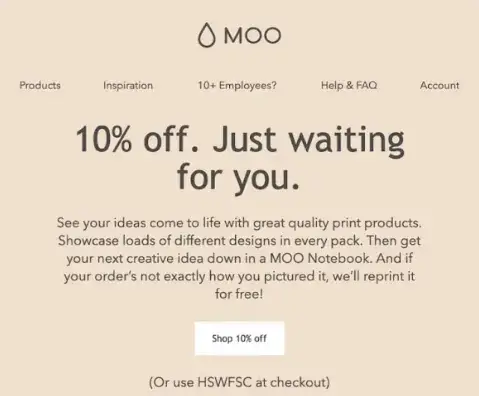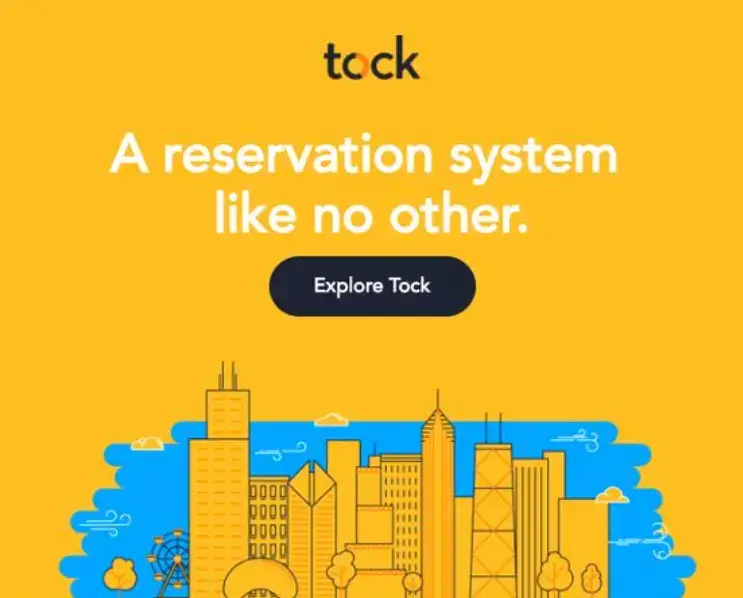Email marketing allows small business owners to build stronger relationships with future and existing customers. Email communication is personal and makes the audience feel you care for them.
That’s why email marketing can virtually guarantee more leads and generate great revenue results.
*Updated 8/8/2024
In this article, let’s learn about powerful email marketing strategies that can help you jumpstart lead generation, improve SEO, and broaden your customer base.
Research done by HubSpot shows that 64% of small businesses use email marketing to reach customers.
6 Must-Have Email Marketing Strategies
1. Build an email list
A contact list lays the foundation of successful email marketing. It contains the email addresses of those who’ve subscribed to your mailing list. So how do you get your target customers to sign-up for it?
- Add a call-to-action to your business blog to inform people about your newsletter. Make sure you discuss the benefits of opting in. For instance, you can tell users they will get the latest offers and educational content in their inboxes if they subscribe.
- You can create buzz about your newsletter on your business’s social media handles. It’s a great way to spread awareness and get new people on board.
- Gated content assets like e-books and online courses are excellent for growing your contact list. You can offer these content upgrades to those who agree to sign-up for your newsletter.
- You can also use a simple website popup that communicates about the newsletter USPs and asks the users to fill up a quick subscription form.
The easiest way to build a professional-looking contact form is to use the POWR free mailing list app with exciting features like advanced customization and autoresponder emails.

2. Create a newsletter calendar
Once you build an email list, you must send subscribers emails. A bi-monthly email is a fantastic way to start email marketing. You can convert it into a weekly feature. Let’s look at some email types.
- Collate and send a quick round-up of recent blog posts. Educational content helps you create value for your prospects and strengthen your relationship.
- Share an offer or a promotional discount with first-time buyers. This way, you can lure prospects into trying your product and becoming customers. Here’s an excellent example from Moo, a customized online printing service.

- If you have a case study showcasing how you helped existing customers, you can share it in an email. Case studies help display the worth of your products and services. For example, this case study on Notion's content marketing strategy examines how the company quickly gained success and traction.
- Do you wish to simplify your product or service to prospective customers? Work on creating an introductory video and share it with your mailing list.
An email calendar gives you a plan for sending various emails so your audience always looks forward to each one.
3. Work on the design
Make your email content look pretty, and your prospects will engage. Let’s take a look at some helpful email design tips.
-
Choose brand colors
Even if you use a bulk email sender to reach out to many customers at once, you need to maintain design coherence in each and every letter.
You should ensure your email text is visible and easily read. Finally, use the correct font colors to ensure the copy is legible to the recipients.
Align your email marketing with your brand identity. An interesting strategy is to use fewer colors in your email design. Here’s a beautiful example from Tock, a popular restaurant reservation app.

-
Drag-and-drop tools
Many email marketing tools also offer nice-looking mail templates and drag-and-drop editing features. You can use such nifty tools to design your newsletters on the fly.
-
Use interactive elements
Make your email design enjoyable by infusing interactive elements such as animated gifs, polls, games, and integrated forms.
A good-looking email is visually appealing, which is why it’s so critical to get the audience to engage with your email communication.
4. Write copy that hooks the audience
Effective copywriting is vital for getting the appropriate conversions from your newsletter campaigns.
The subject line is a critical piece of the newsletter puzzle. Get it right, and getting recipients to open your emails will be easy.
The email body copy should be storytelling in action. Use an emotional hook to inspire the audience to take quick action. Here’s a good example:
The last part of the copy is the call to action. Use it to trigger an action. For instance, you can get the audience to read your blog, take a free product trial, or book a free consultation.
Create audience personas by your ideal customers’ interests and preferences. The strategy helps create a newsletter copy that speaks directly to the target audience.
The golden rule for effective newsletter copywriting: the right words can win hearts and convert naysayers into loyalists. So don’t forget to use the right ones for your email campaigns.
5. Ensure accessibility
When sending emails, you need to ensure that most of the recipients get to open and read your messages. More than fifty percent of marketers feel that email accessibility is essential.
6 steps to ensure email deliverability
- Ensure email frequency is optimal. Too many emails in a month can irk your recipients and make them mark your emails as spam.
- Make sure the email addresses are verified as authentic and unbroken.
- Send only to those who have subscribed. Don’t forget that permission is the heart and soul of successful email marketing.
- Optimize for mobile devices. It’s the best way to reach and connect with a growing mobile user base.
- Avoid spam filter triggers. Be aware of words that can trigger spam filters that send your emails to recipients' spam folders.
- Include an unsubscribe link. You must ensure users can unsubscribe from your mailing list. This is easily done by adding the link to your email footer.
Making your emails reach your target customers can significantly affect email campaign performance. And that’s why accessibility and email deliverability are critical to winning email campaigns.
6. Track results
Let’s face it; when you do some kind of marketing, you need an email tracker to track the results and learn where you might be going wrong.
So head over to the analytics dashboard of your email marketing tool, and voila, you’ll see a bunch of useful metrics!
- Review the campaign open rate to see how many people chose to read your emails. Consider altering your subject line if open rates are too low.
- The bounce rate of your emails tells you the percentage of emails that could not be delivered.
- Check the rate of unsubscribers to learn if you’re delivering real value from your email campaigns.
- The click-through rate conveys if people visited the links you shared in your email. It’s another excellent metric to judge whether your email design and copy work.
- Review the conversion rate to see if people completed an action, like purchasing or signing up for an event. This metric tells whether your message and the call-to-action are nailing it.
Wow, that’s a lot of metrics to track. But they’ll give you a host of insights into how to better your outcomes from each subsequent email campaign.
Final Thoughts
Email marketing allows small businesses to communicate directly with prospects and inspire them to turn them into long-term customers.
You should utilize email marketing and SEO to nurture your leads and convert them into paying customers. You can also use cost-effective tools to set up, run, and track your campaigns easily and simply.
Author Bio
Abhishek Talreja is a seasoned international ghostwriter, content strategist, and columnist. Abhishek has been published on MarketingProfs, AllBusiness, Techinasia, Sitepoint, and more. He is the founder of Prolific Content Marketing.


